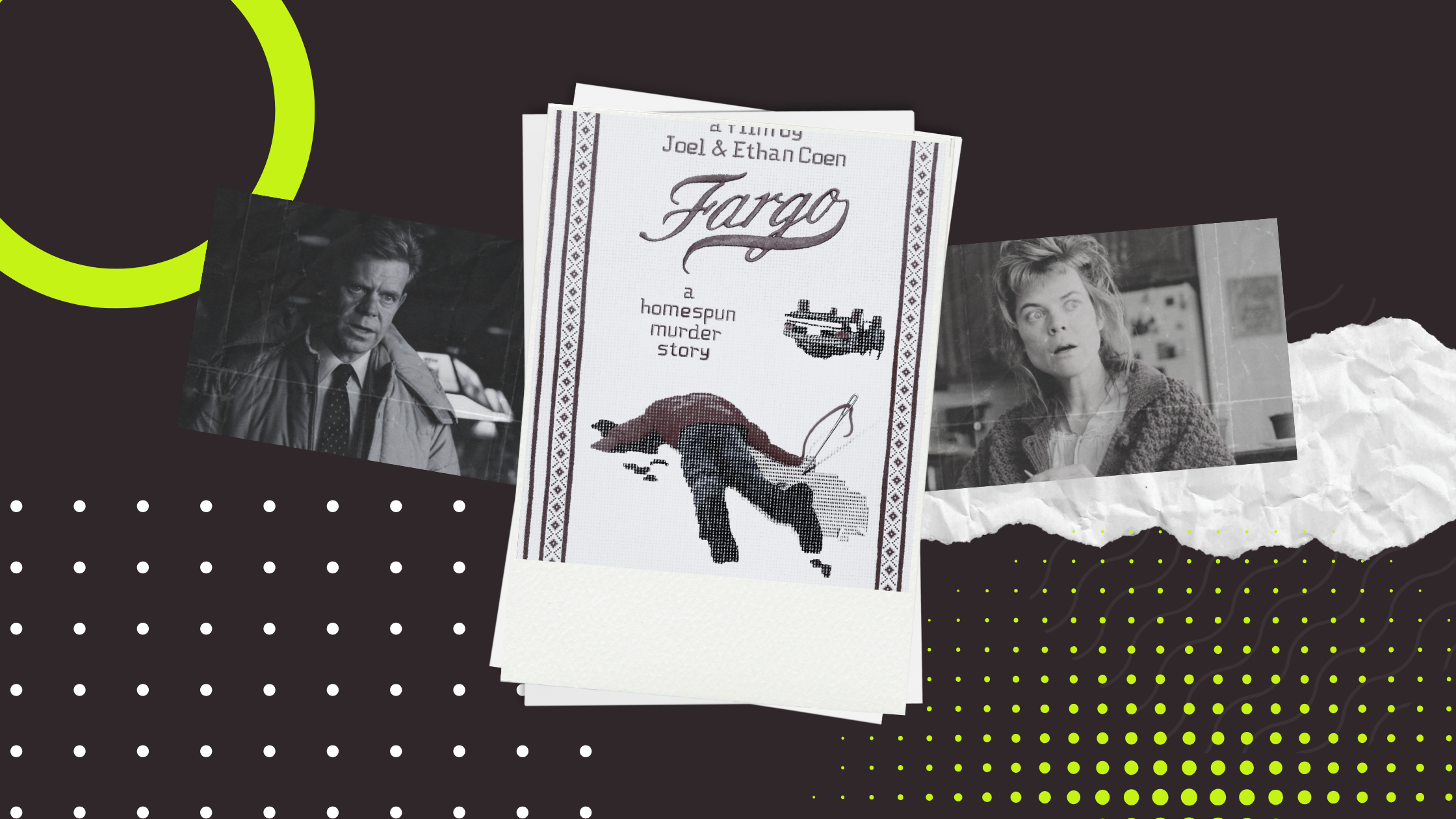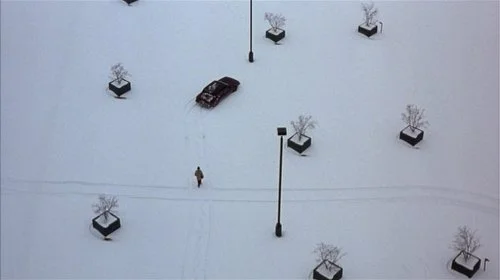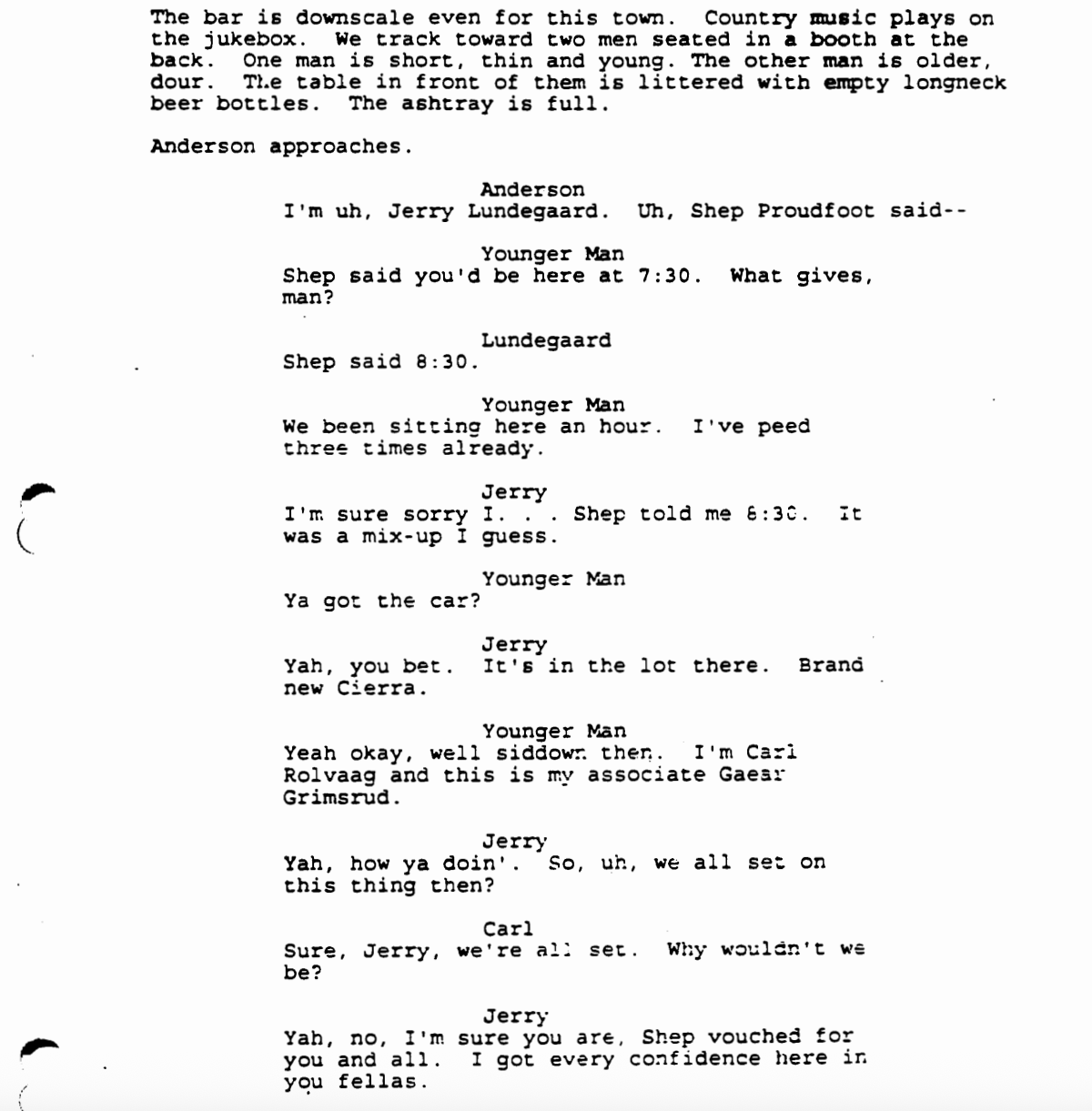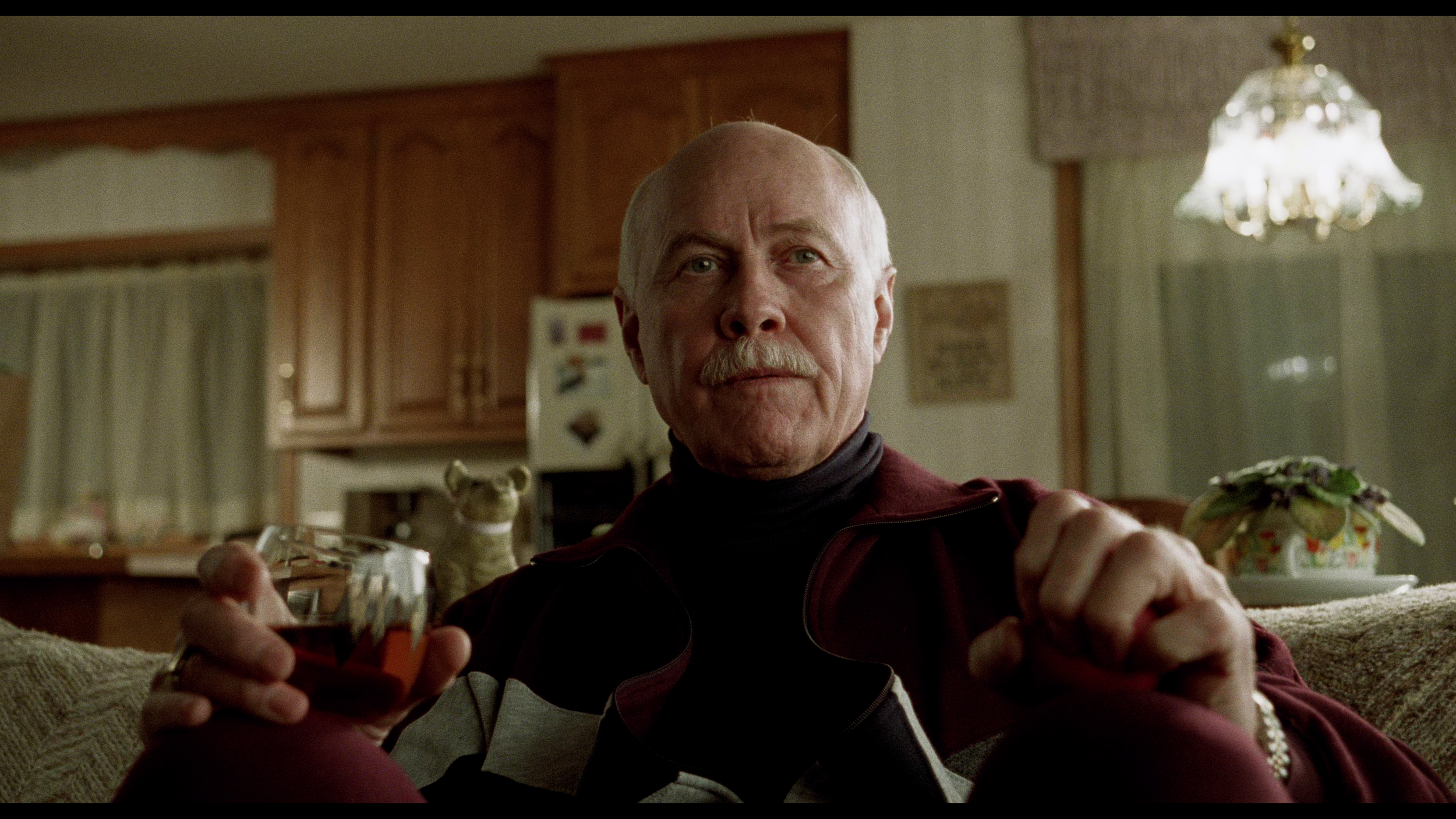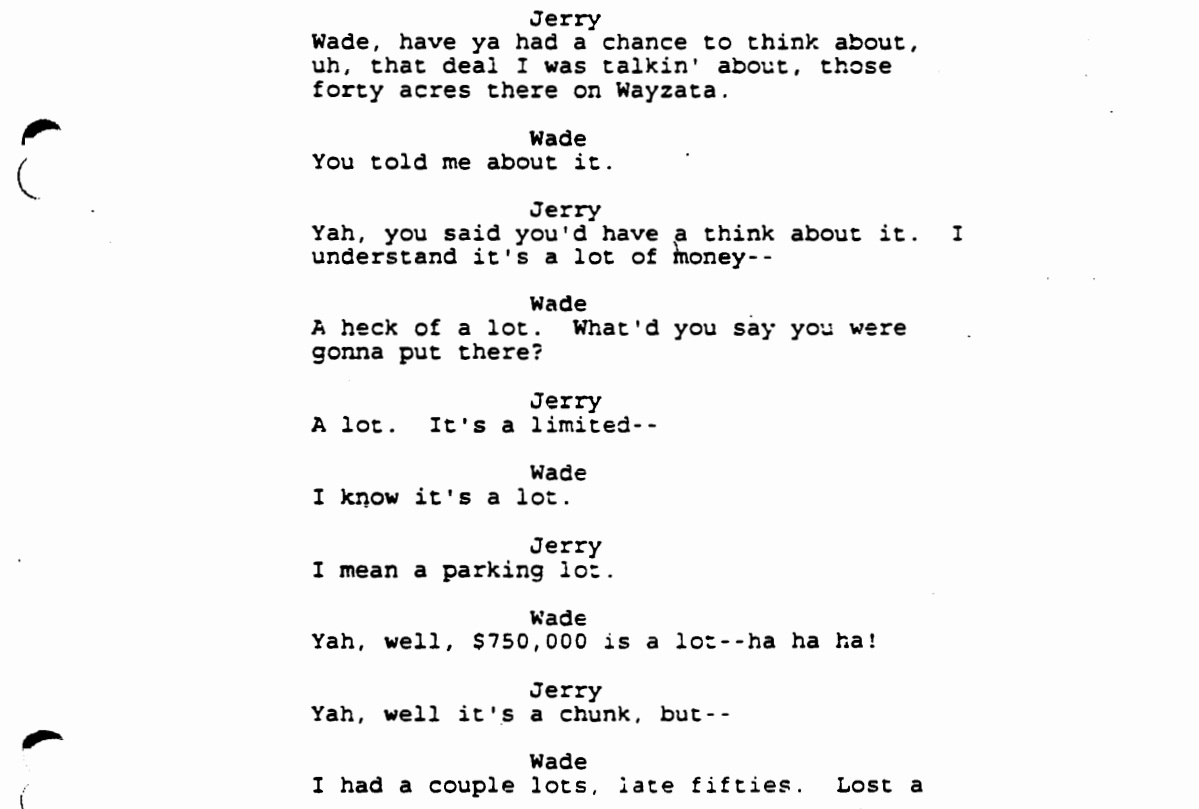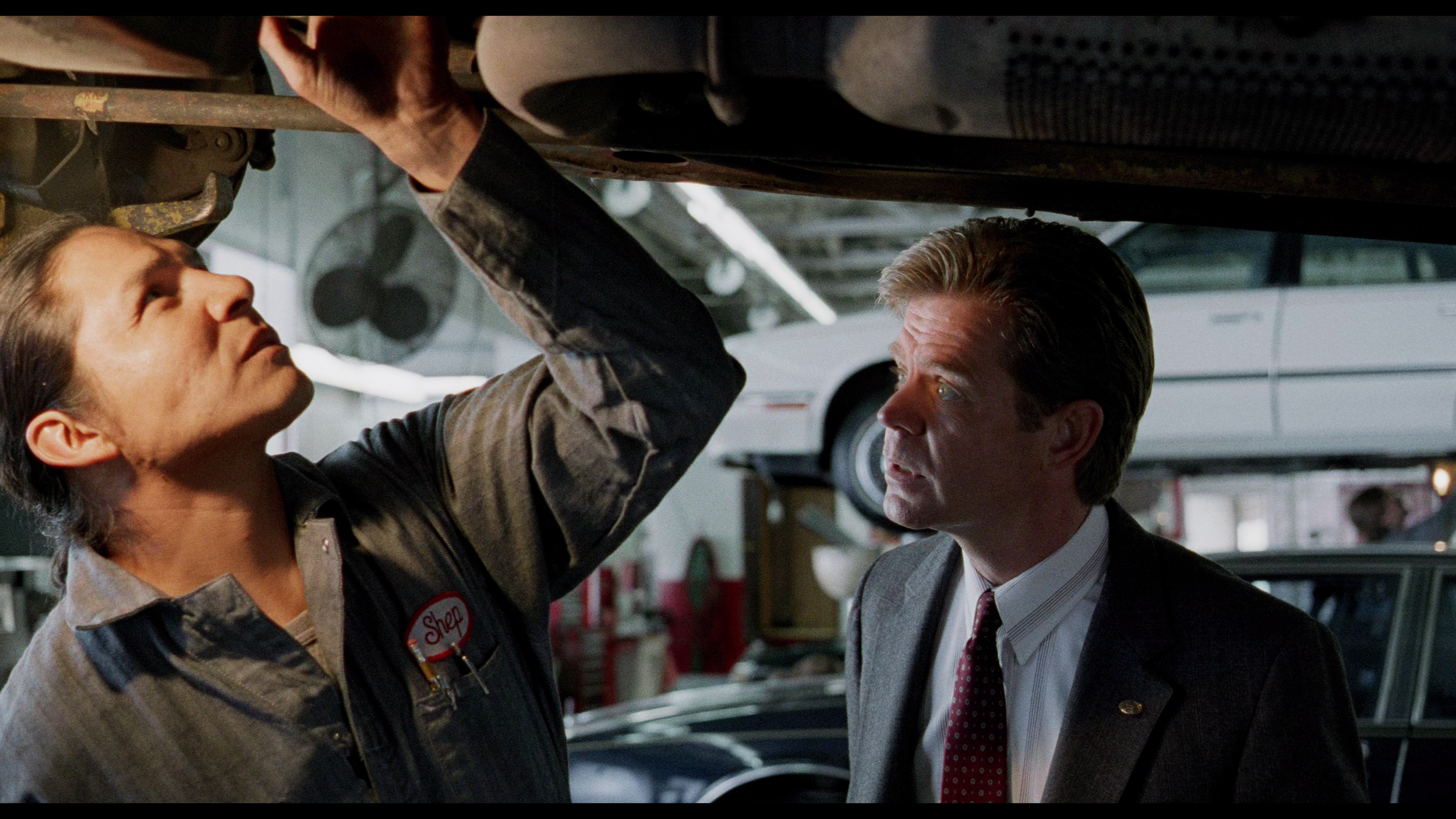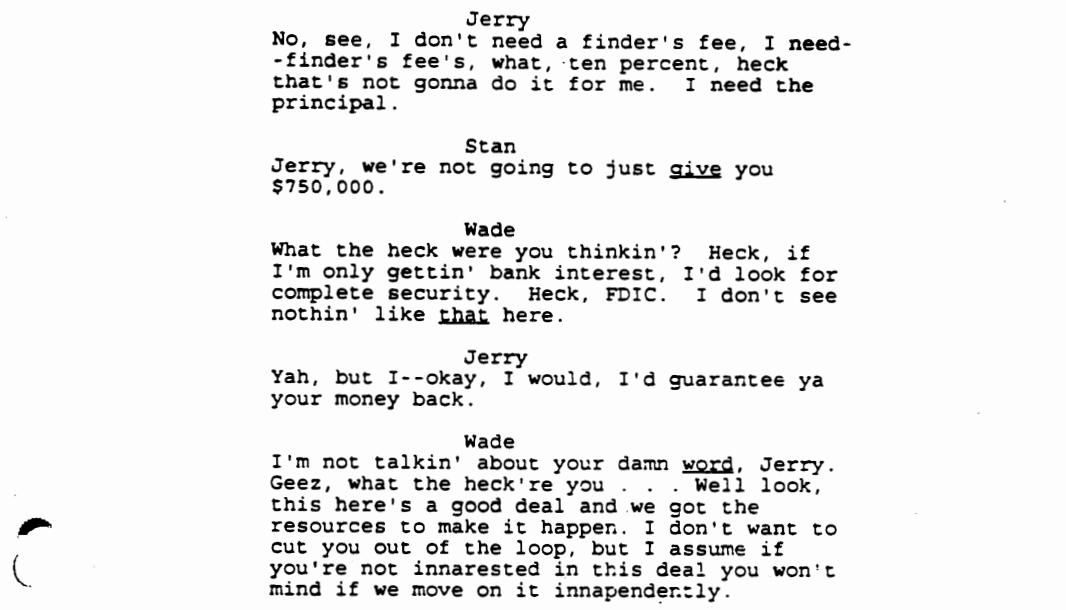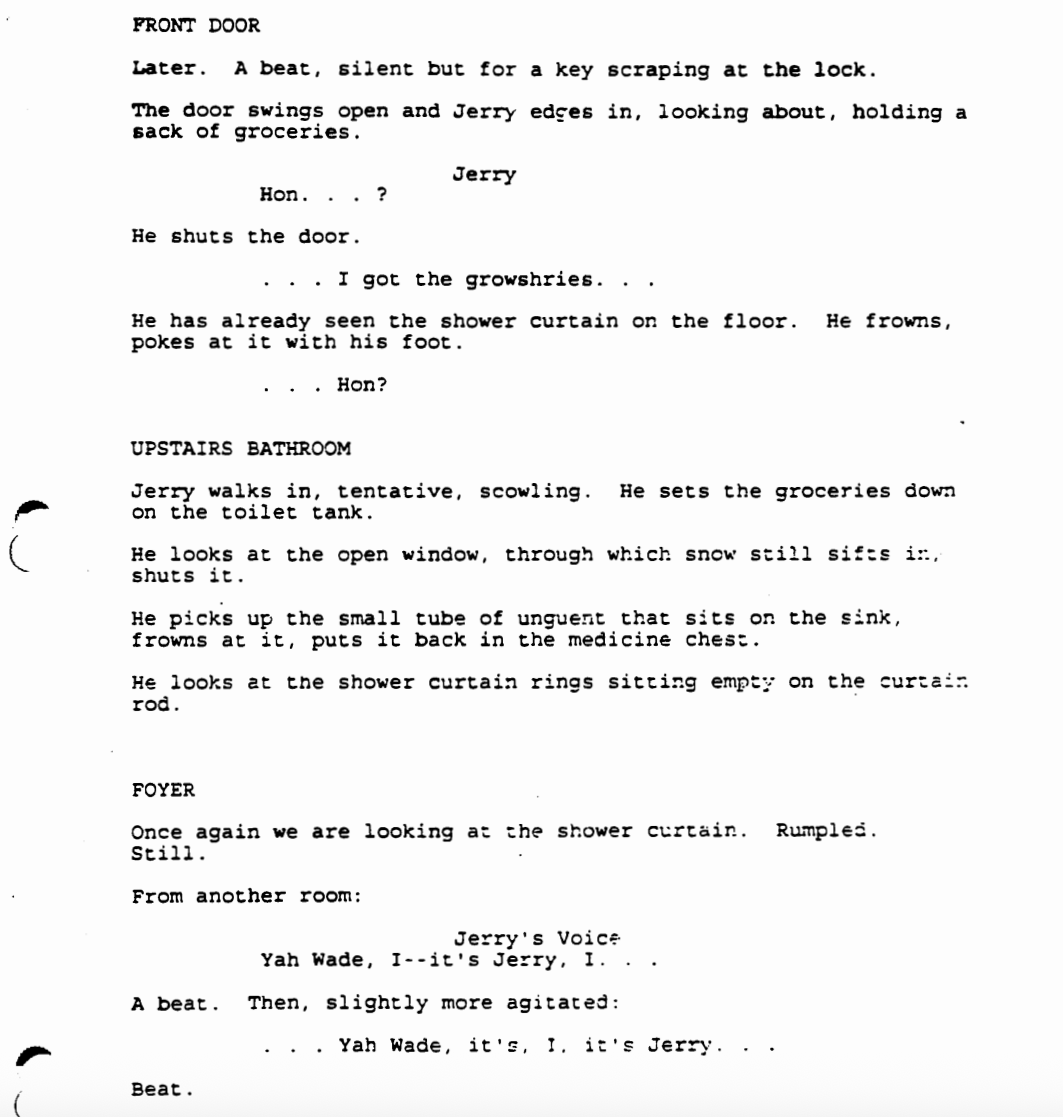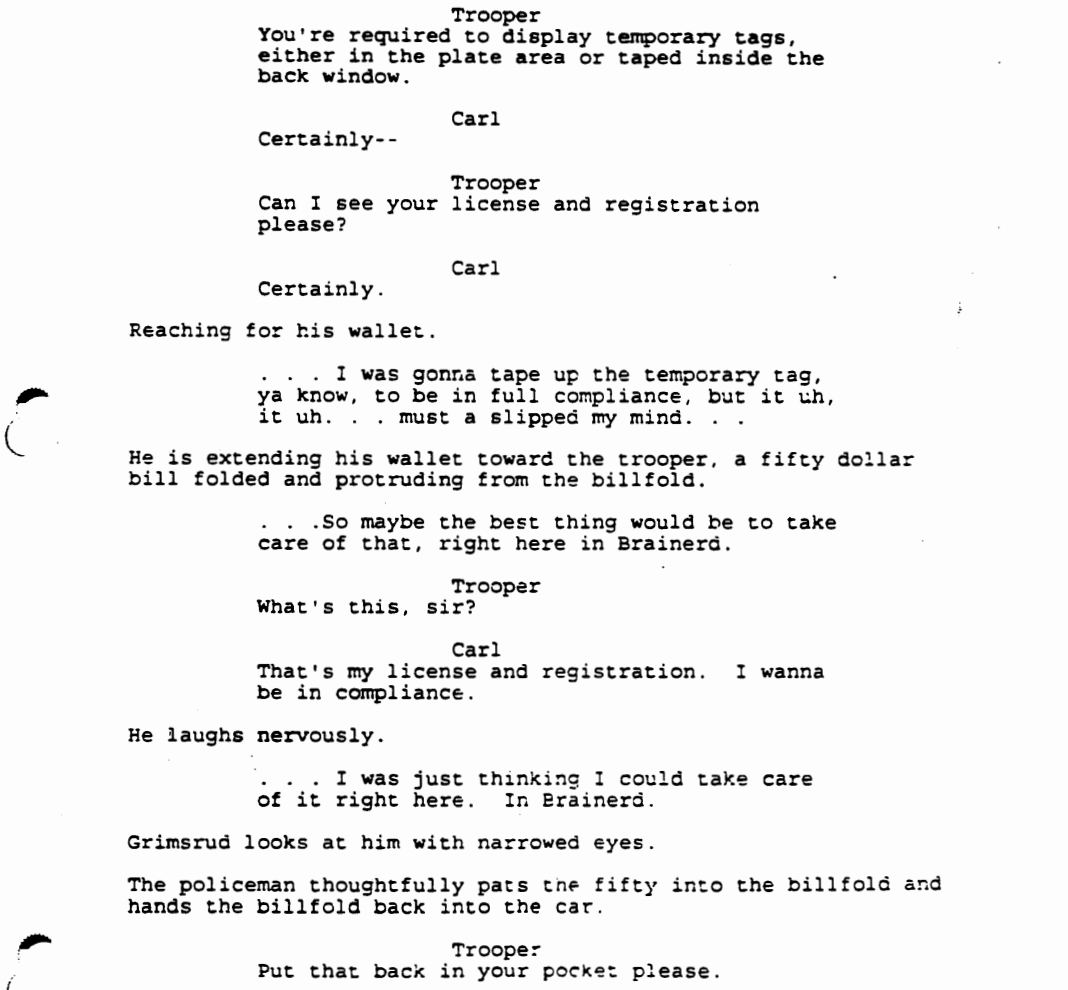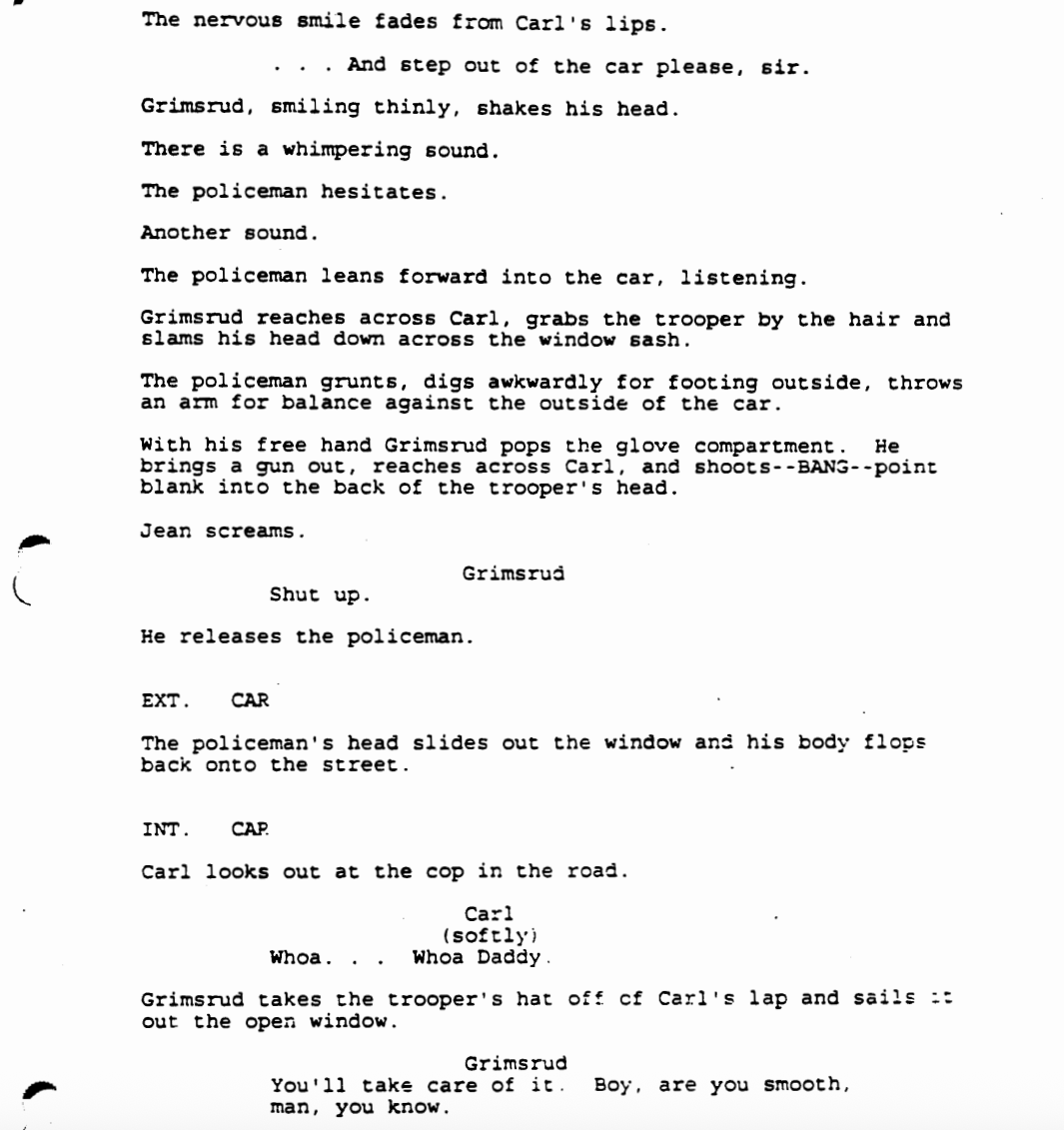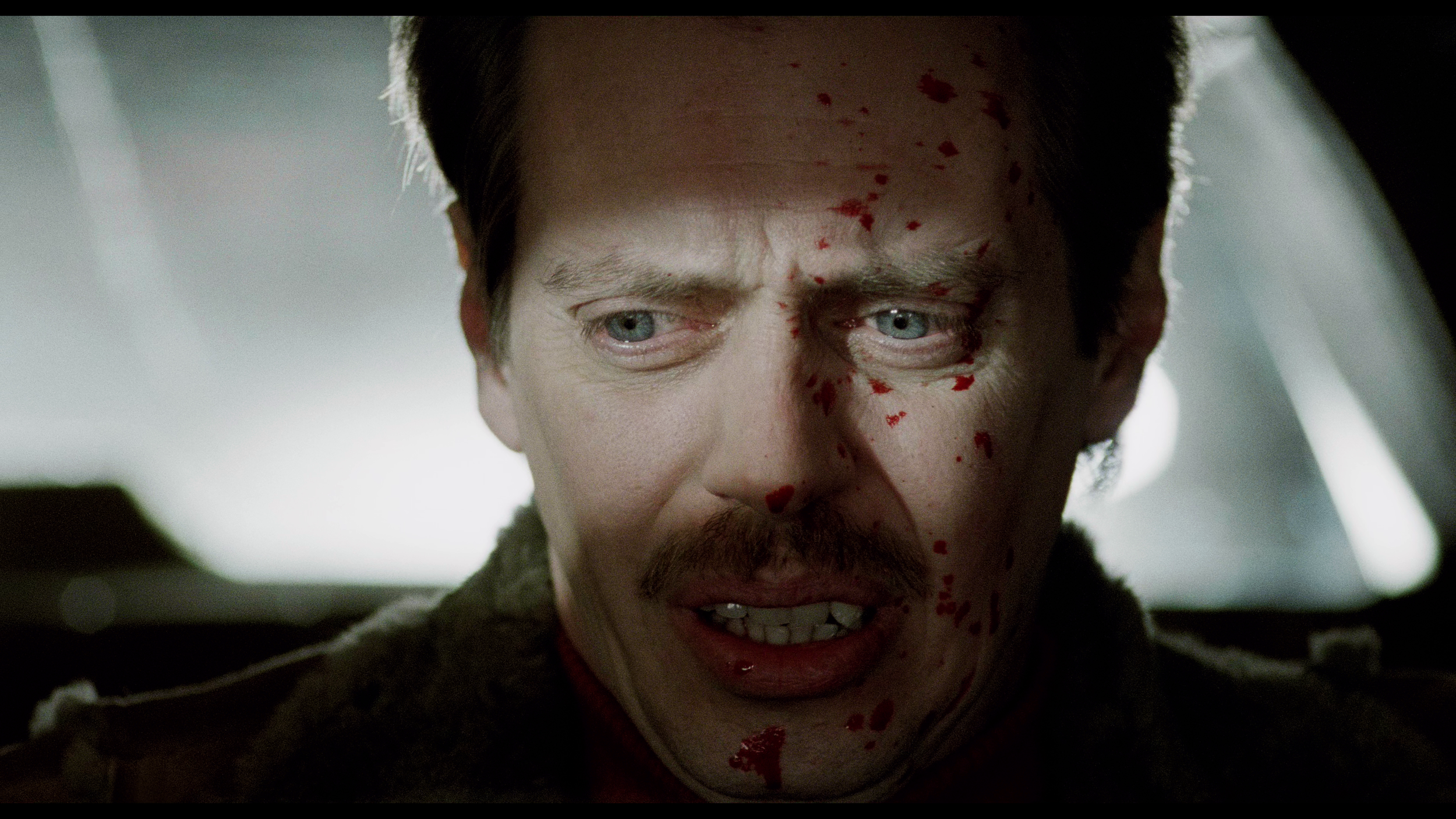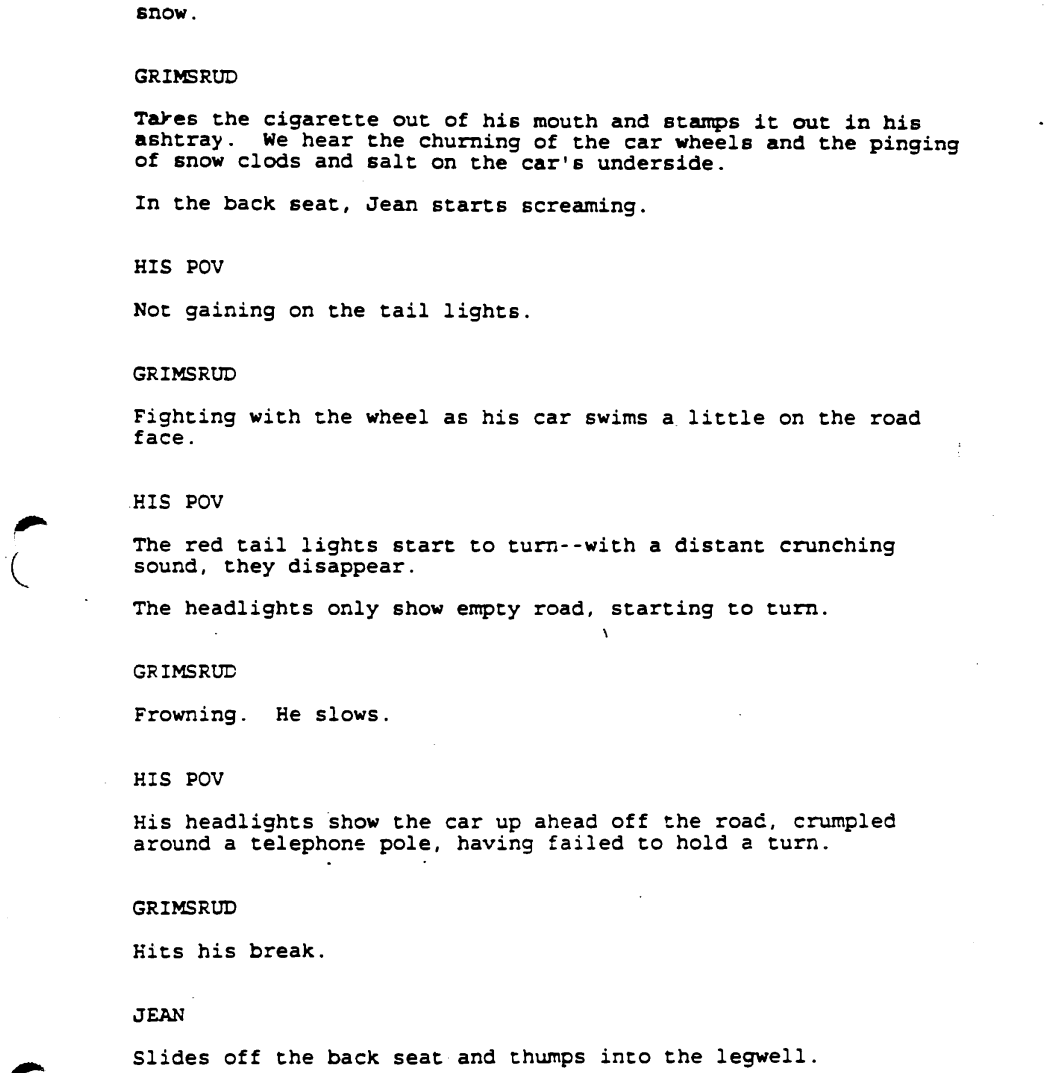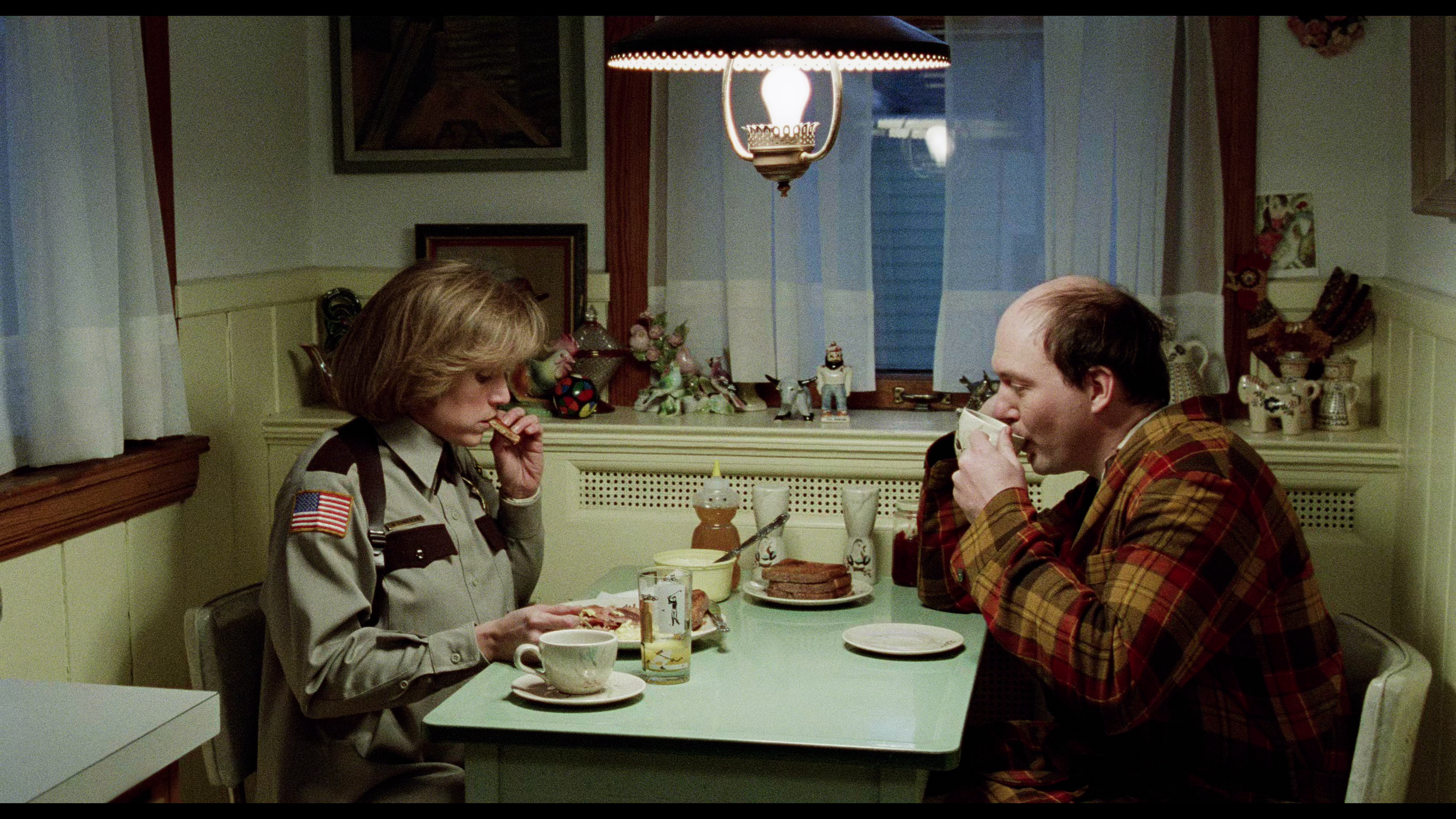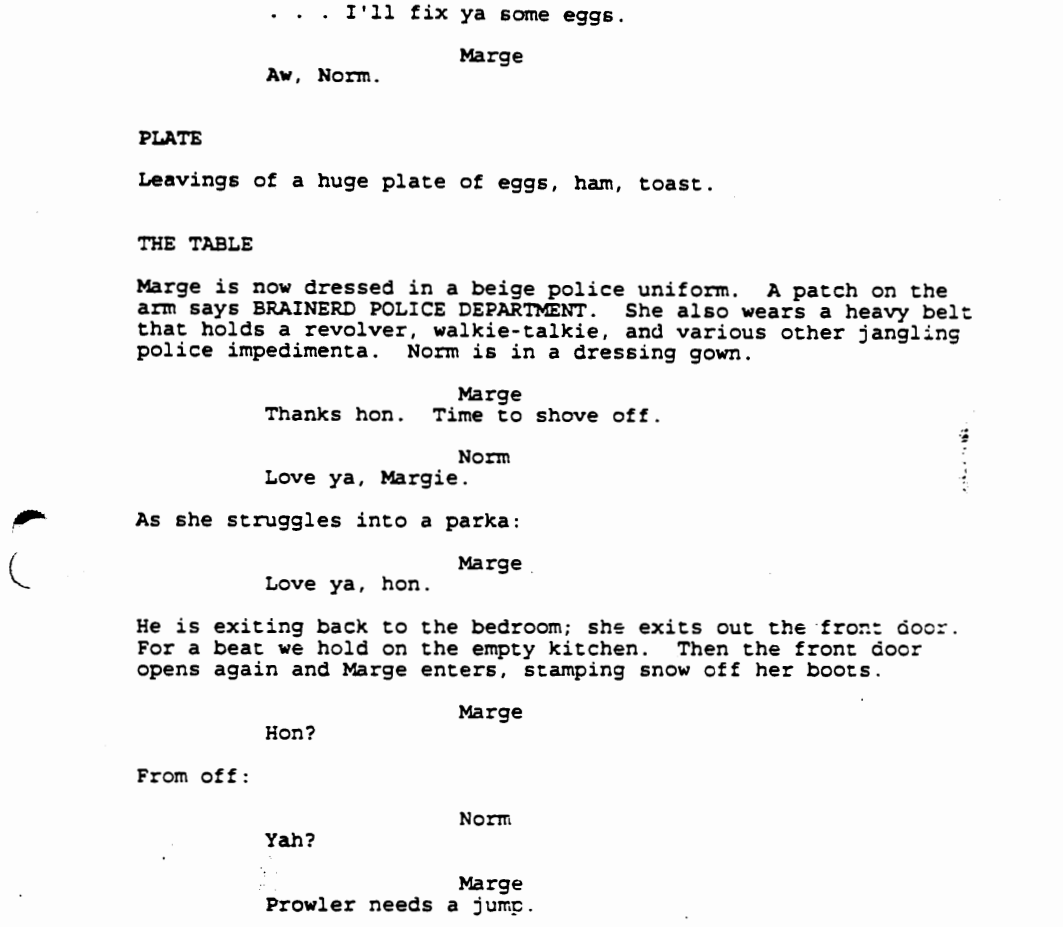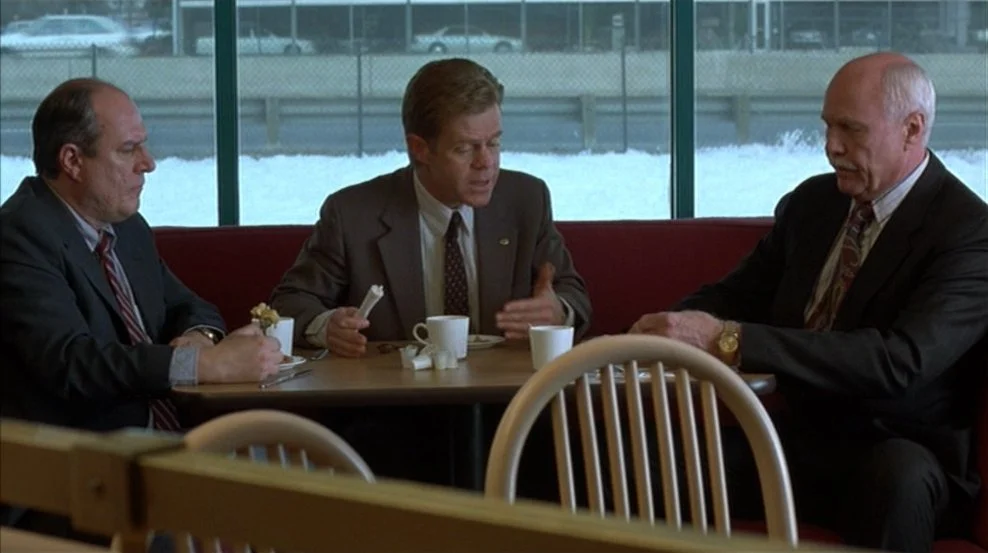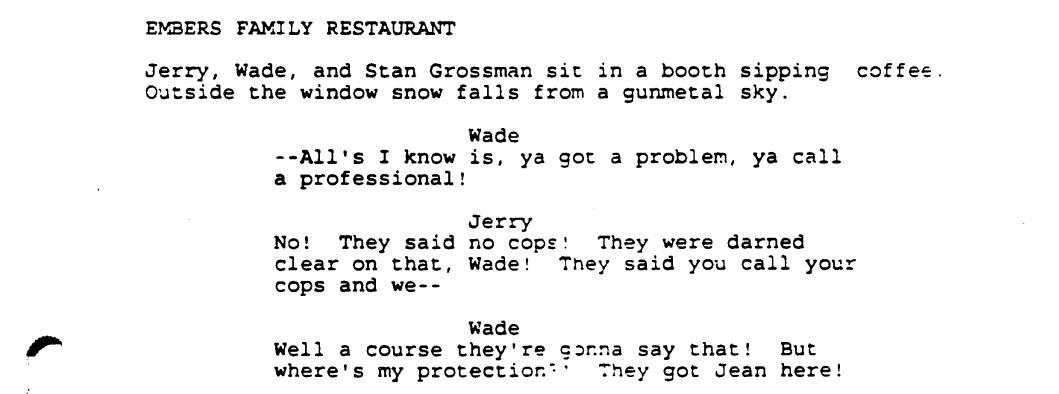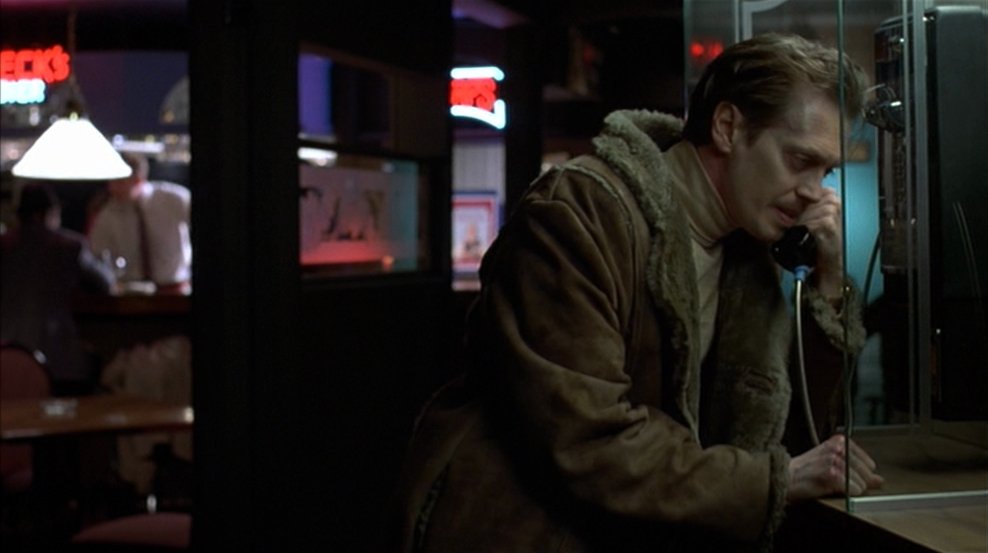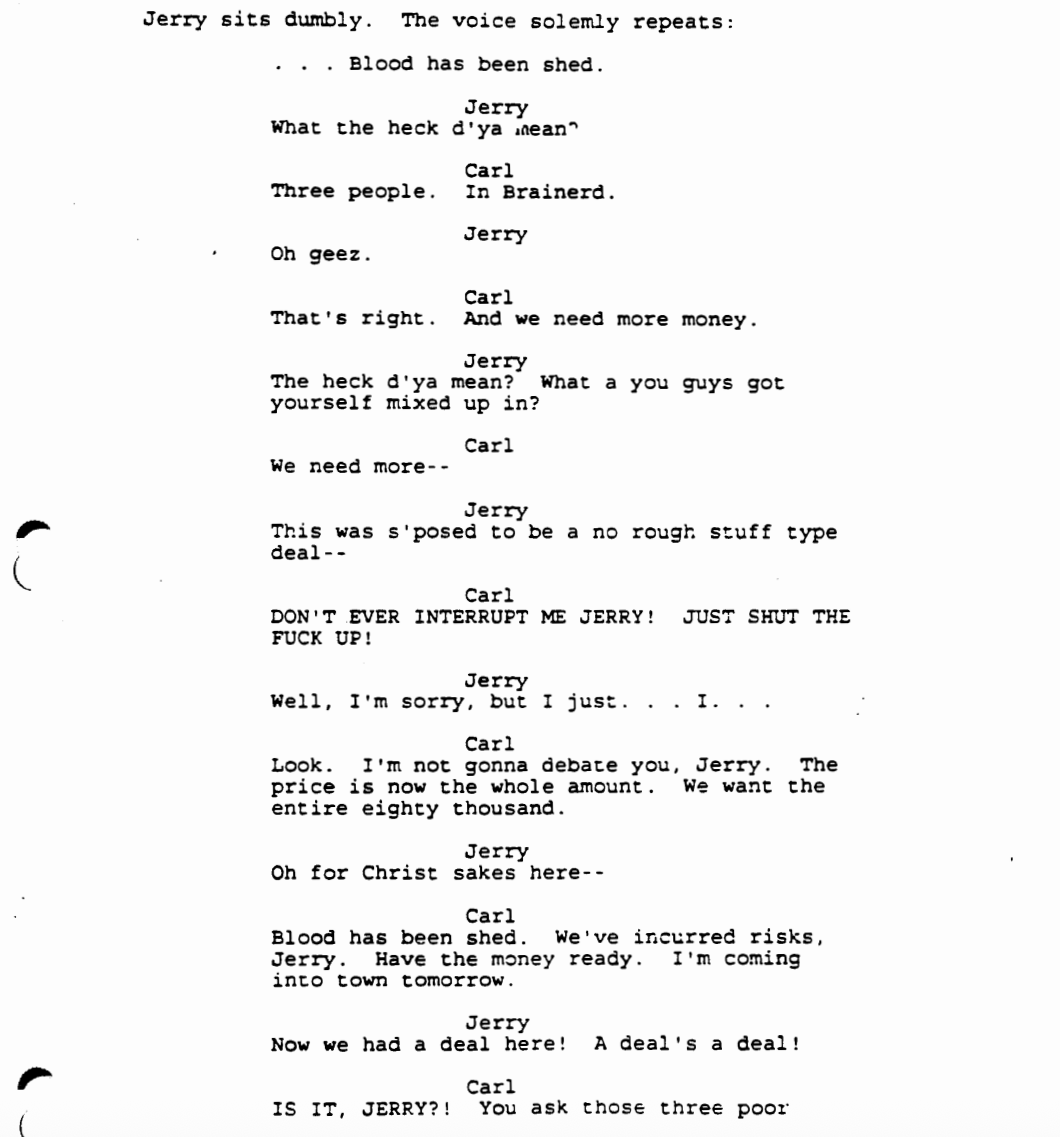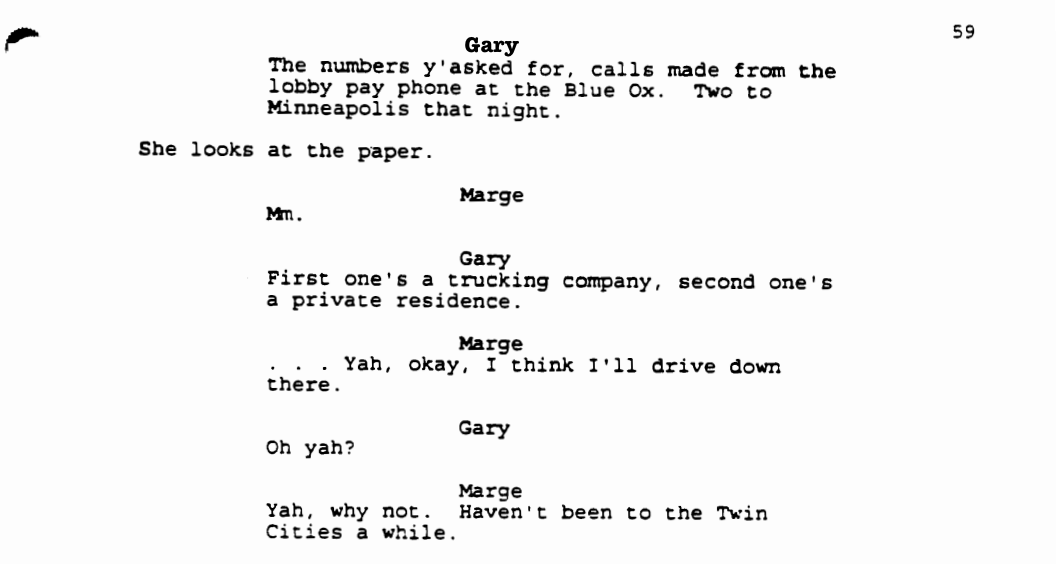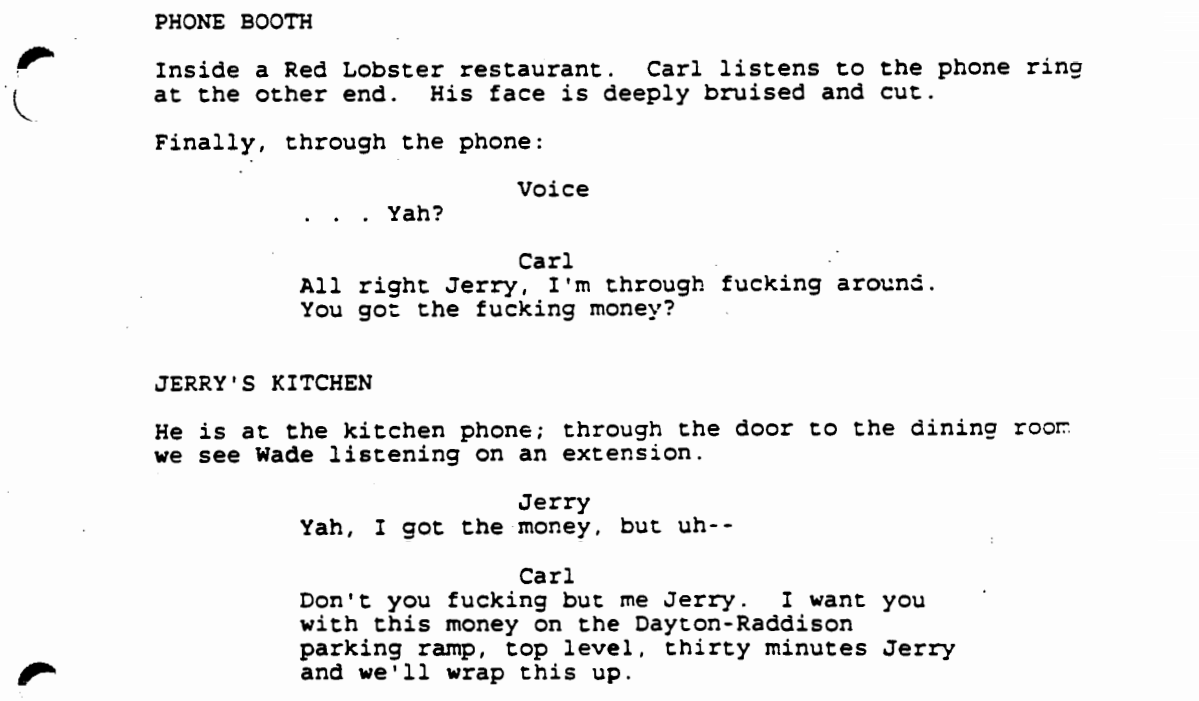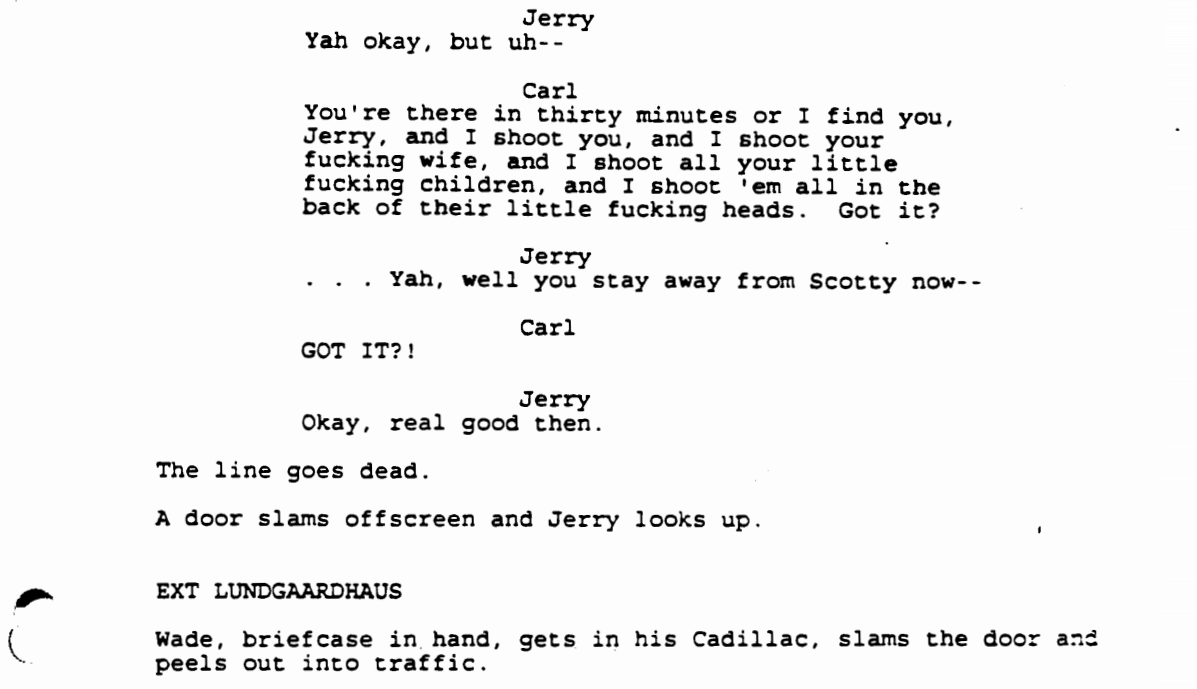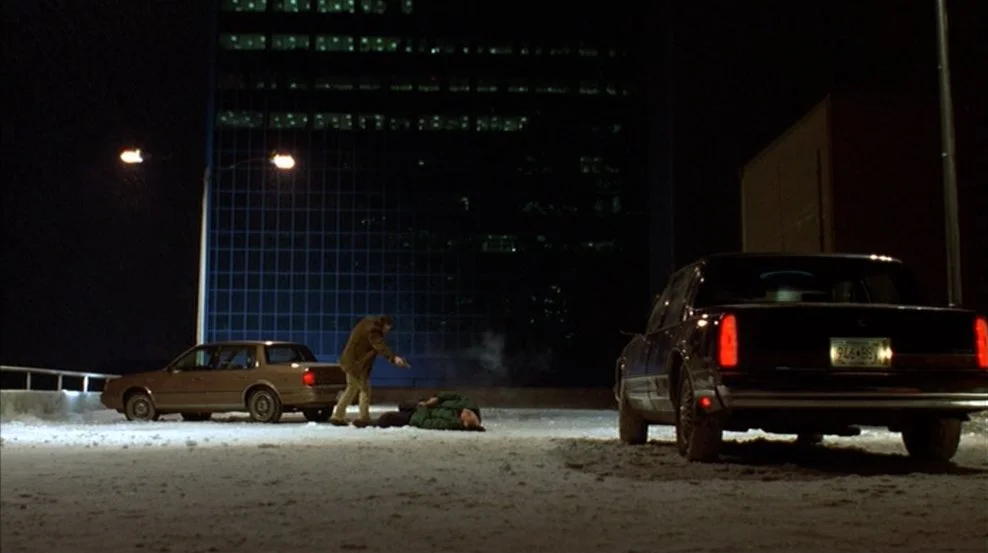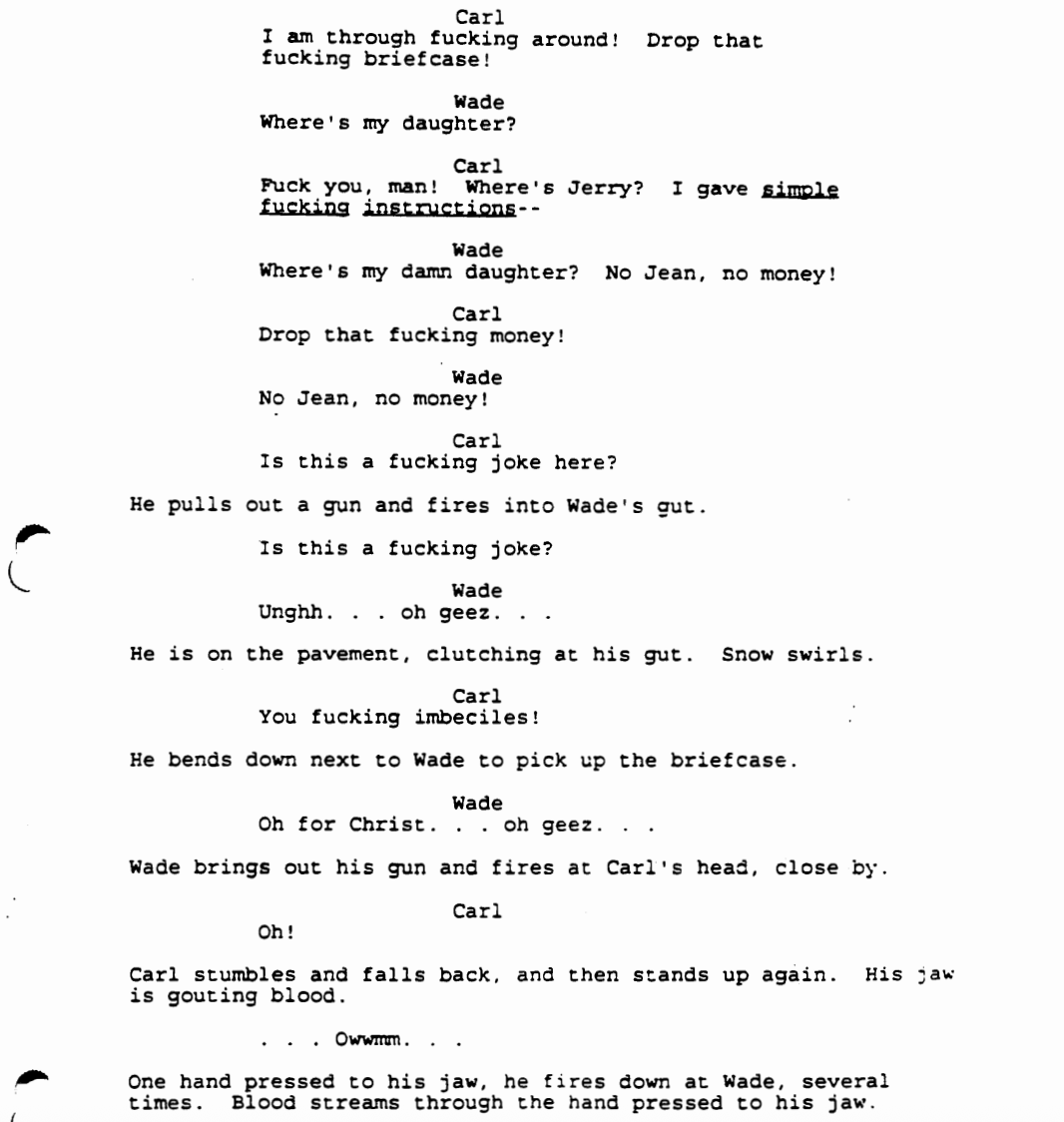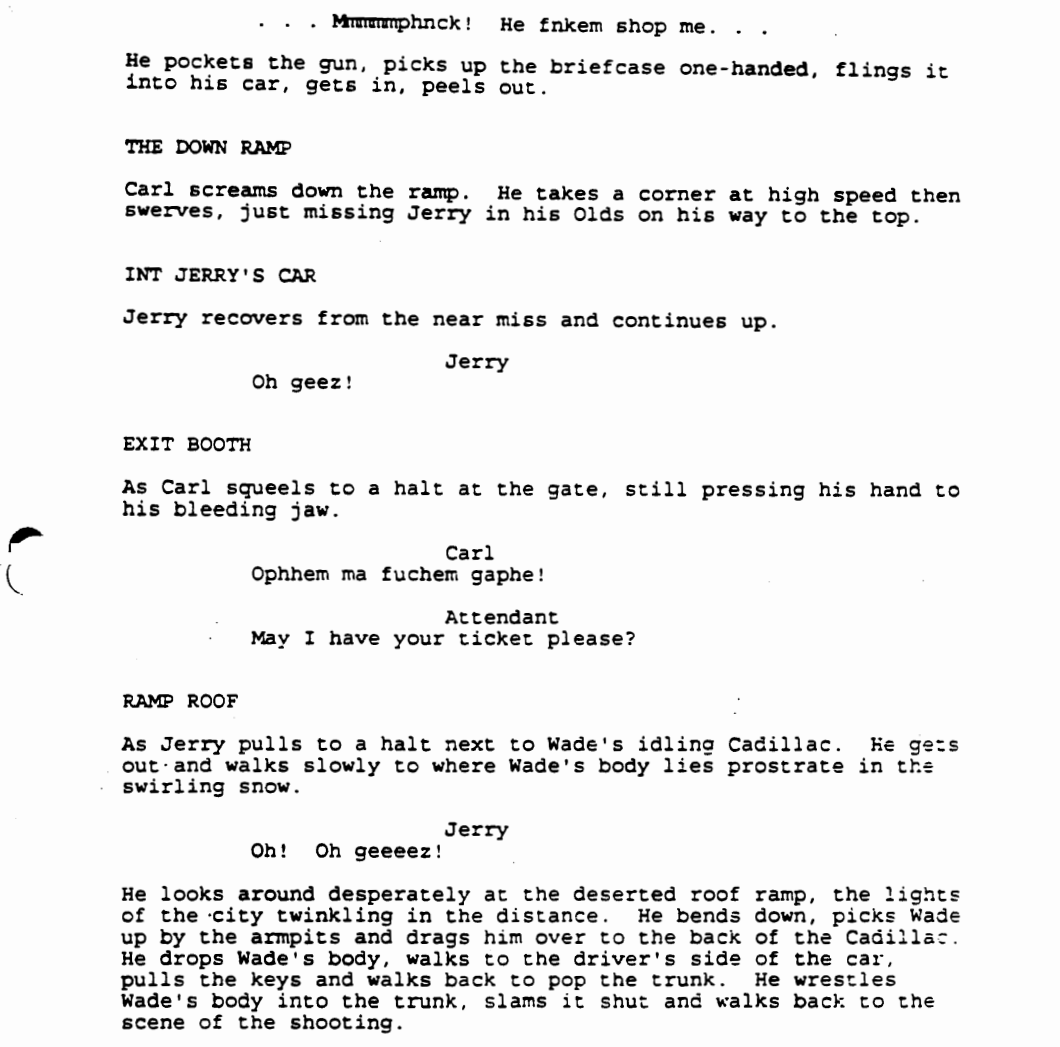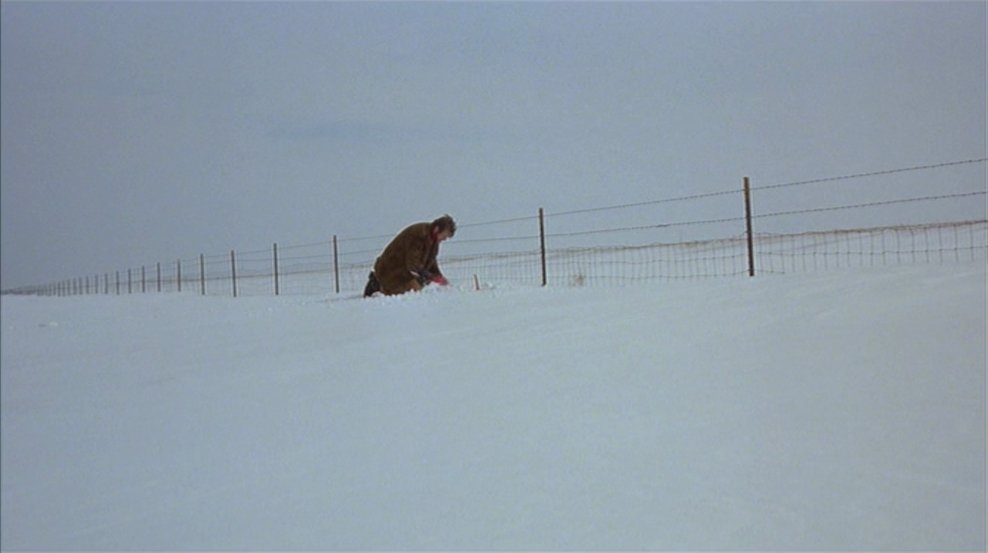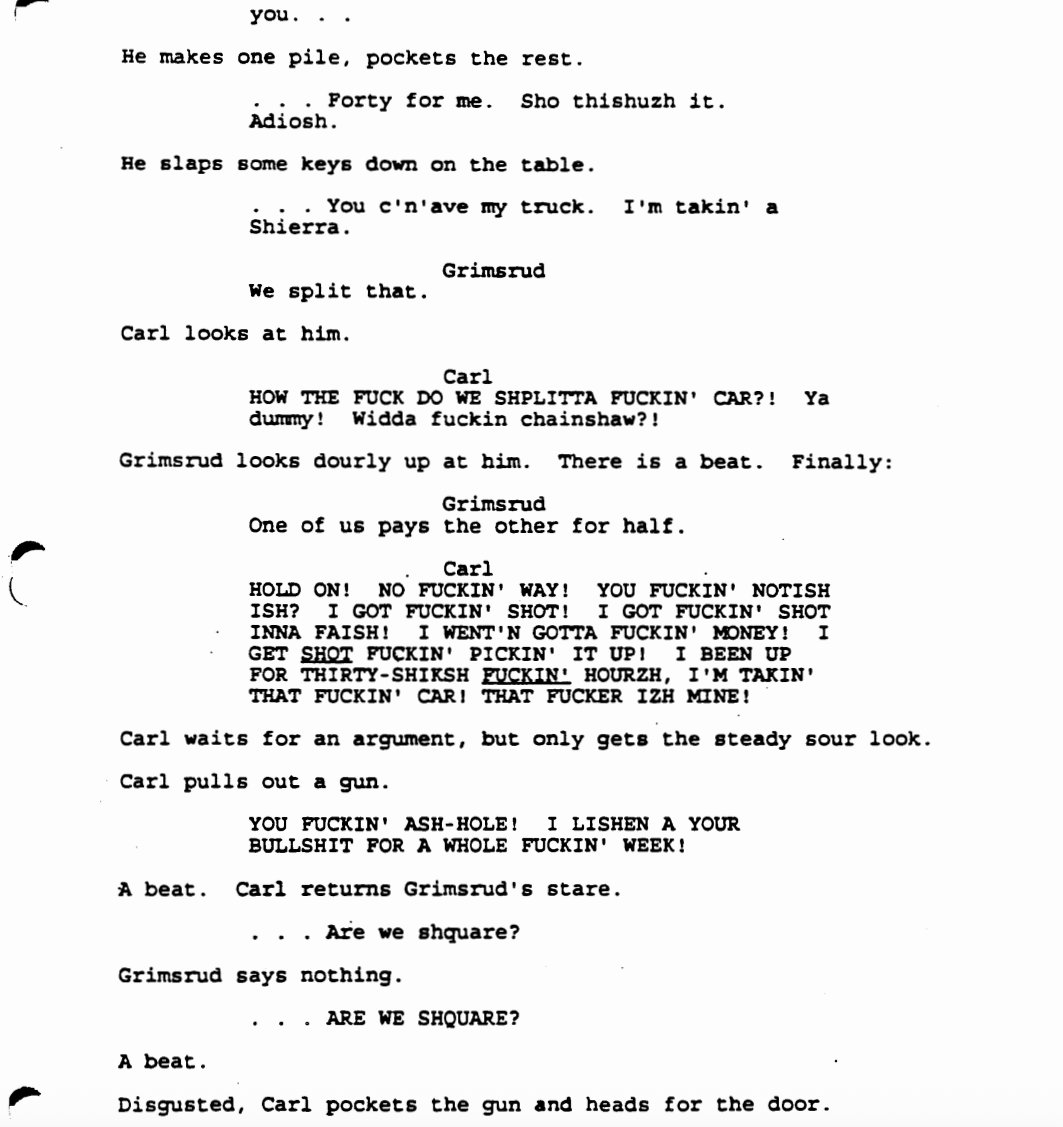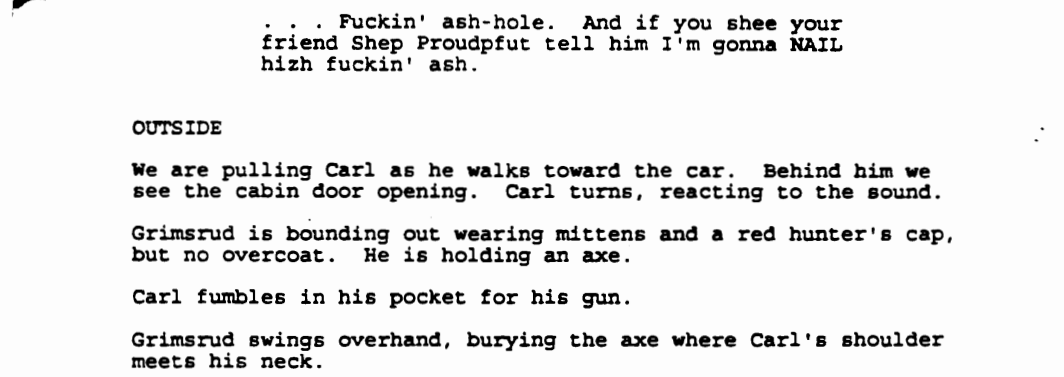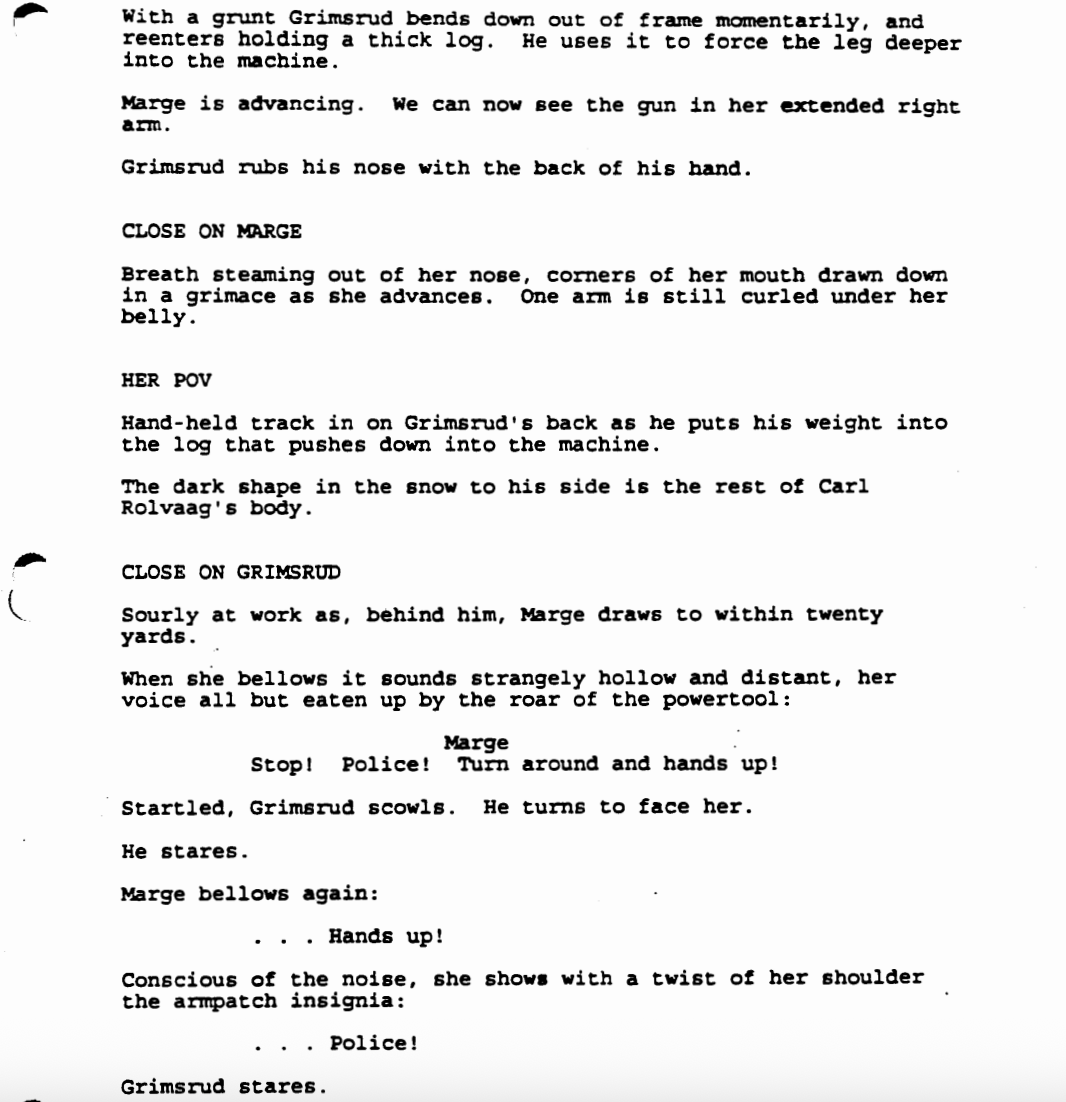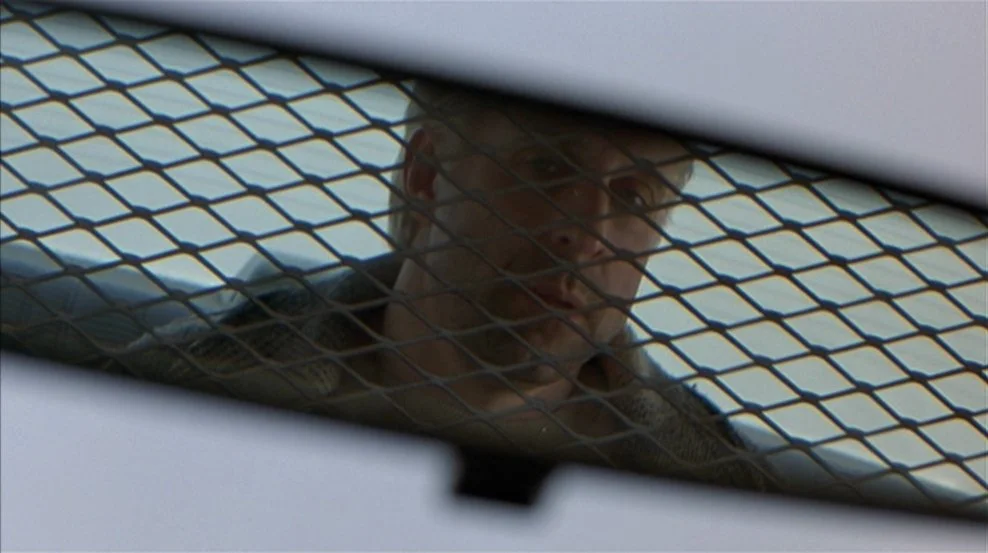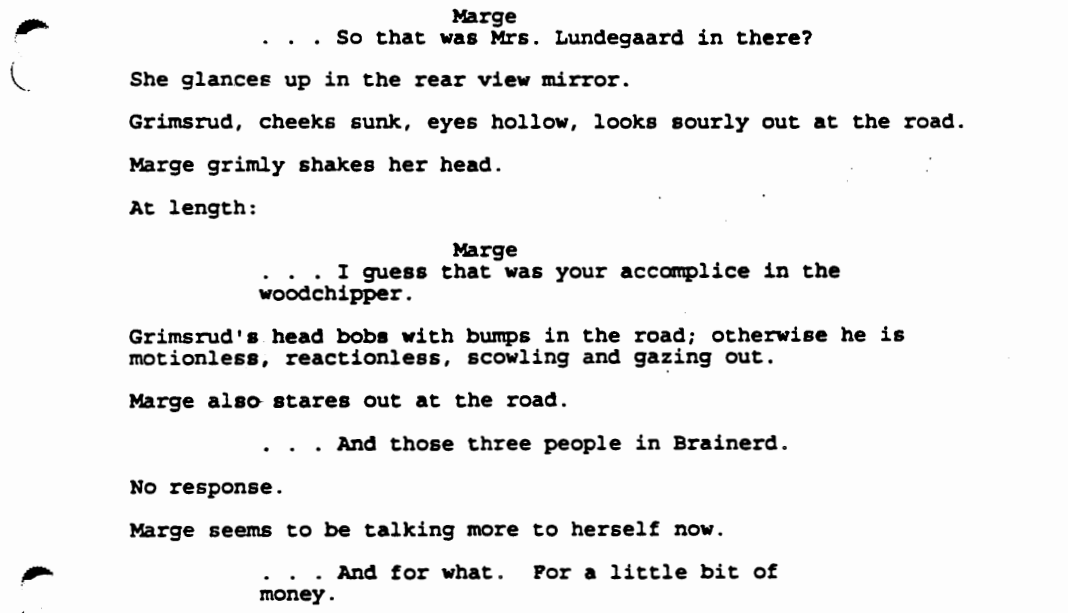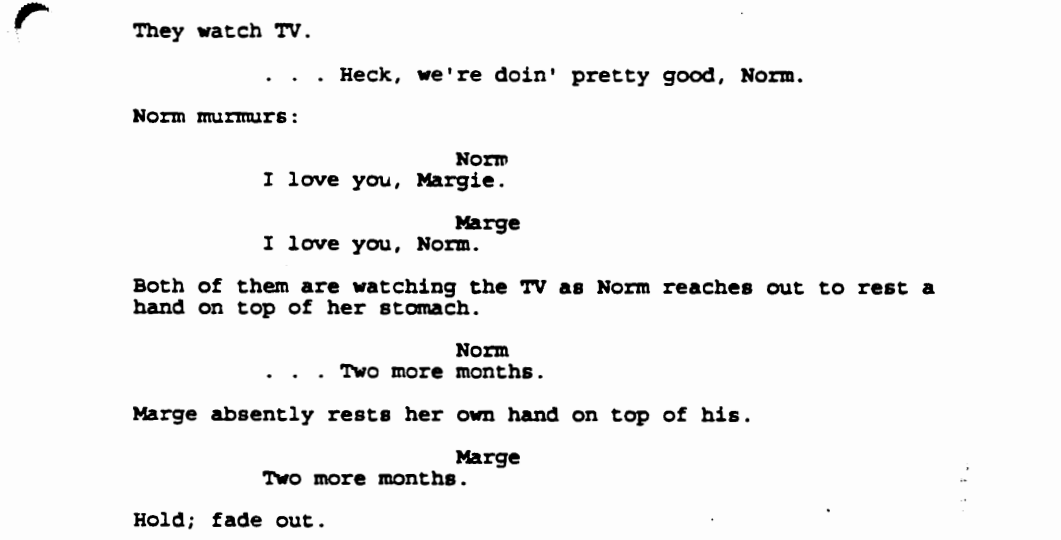This is Why We Go to the Movies: A Fargo Script Analysis
During a tribute to his longtime movie-review partner, Roger Ebert reminisced on the time he and Gene Siskel watched the Coen Brothers' 1996 classic Fargo for the first time. The way Ebert tells the story, Siskel leaned in towards Ebert near the end of the film and whispered, “This is why I go to the movies”. A simple review that says a thousand words, this sentence highlights everything perfect about this film.
Fargo simply has everything. In the modern era of moviemaking, audiences have begun to lower their standards relative to every film they see. If a movie advertises suspense, they might accept that it’s not going to be very original. If a movie promises action and intensity, an audience might accept that it won’t have good character development. Even if a movie manages to somehow nail every aspect of “artistic” or “respectable” filmmaking, an audience is usually willing to accept that it probably won’t be very entertaining. But why can’t a movie have it all? Is the bar really that low nowadays? When did we accept that checking every box just wasn’t possible anymore? In this script analysis, I’m going to highlight a film that proves that movies really can have all of these things (and more), all without sacrificing the quality of any of its other elements: the Coen Brothers' 1996 masterpiece, Fargo.
OPENING IMAGE
The film opens with a cold warning to the audience, letting them know that the events of this film actually happened in Minnesota during 1987. While not true whatsoever, this message lets the audience know two things: 1. Whatever is going to happen during the next 100 minutes must be insane if the filmmakers have to emphasize that it actually happened, and 2. Since this film is based in reality, and many people die during the story, it’ll likely highlight the horrors that man is capable of. Already, we’re intrigued.
Shortly after, we cut to our opening image: a small car towing another small car through a snowstorm in the middle of nowhere. Whatever is about to take place, this forsaken, snowy setting is sure to play a major role.
SET UP
The driver of the car pulls into the parking lot of a small dive bar. He’s our protagonist (if you can call him that), Jerry Lundegaard–a timid, average man with a strong Minnesota accent. Inside the bar, he approaches two mysterious men sitting in a booth. (Also, it should be noted that the original script contained a transitional scene where Jerry first speaks to a waitress at the bar, lying to her that his name is Anderson. So disregard any initial mention of this character, because it’s really just Jerry).
Through a simple, naturally written 3-page conversation, the entire film is already set. Jerry’s low on money, his wife’s family is rich, and he’s hired these two idiotic goons to kidnap her so that he can collect the ransom.
On top of that, it seems that Jerry has provided them with the getaway car and that this entire ordeal was arranged by some mutual friend named “Shep”. Right away, we already know just about everything there is to know about this plot–and man, is it good.
The film continues with Jerry returning to his family, which, to the horror of the audience, is ridiculously normal.
Obviously, hiring people to kidnap your wife is bad, but if she were an alcoholic who beat Jerry with a belt, then we’d at least kind of get it. But no, she’s very sweet, as is their son, Scotty. The only person who is anything but wholesome is Jerry’s father-in-law, Wade.
At dinner, Jerry brings up a potential business deal for Wade to consider, revealing that he’s trying to earn money from multiple angles (he’s diversifying!).
The script continues with a series of additional scenes that help us get to know our characters a little bit better. Grimsrud and Carl, as it turns out, don’t actually know each other that well. We don’t quite know how they know each other, but it’s evident they aren’t necessarily usual partners, and they certainly aren’t friends. Jerry, on the other hand, is a mostly unsuccessful car salesman (which explains how he got his hands on the Ciera).
INCITING INCIDENT
After dinner one night, Wade calls Jerry and says that Stan Grossman might be interested in that business deal after all.
A flicker of hope. Maybe Jerry doesn’t need to kidnap Jean after all.
The next day at work, Jerry runs over to his car dealership’s mechanic, revealed to be Shep (a giant, Native American man), to tell him that the plan is off.
No luck there. Jerry goes back to his office, where he’s welcomed by a phone call from an auditor. Apparently, Jerry had borrowed money against several cars in the lot, but has not provided any proof of the cars’ existence (another genius financial scheme from Jerry Lundegaard).
Meanwhile, back at Jerry’s house, unbeknownst to him, the plan begins to take action…
DEBATE
While the kidnapping is taking place, Jerry stops by Stan Grossman’s office to discuss that deal.
Turns out there was a bit of a miscommunication. What Jerry wanted was for Stan and Wade to lend him money so that he could pursue the deal himself. But Wade thought that Jerry was bringing him a deal, looking to cash in on the finder’s fee.
Heartbreak (and it’s only gonna get worse). After his nightmare of a meeting, Jerry returns home to disaster…
We cut back to Carl and Grumsrud as they drive down a dark highway in the middle of the night, with Jean tied up in the backseat. Then, out of nowhere, police lights flash. They’re getting pulled over. Carl tries to act natural and pulls over for the cop.
End of Act 1.
BREAK INTO TWO
Act 2 opens with a pleasant juxtaposition from the characters we’ve experienced so far, as we cut to a wholesome couple peacefully sleeping in bed.
It’s revealed that Marge (who’s pregnant) is the policeman called to the murder scene that Carl and Grimsrud left behind, and most likely, the person tasked with catching them…
FUN AND GAMES
At a local restaurant, Jerry, Wade, and Stan argue about what steps they need to take to get Jean back.
Also, during this conversation, it’s hilariously revealed that Jerry hasn’t even thought about what his son might be going through during this whole ordeal.
The story continues by showing us a little bit more of what each character is up to. Jerry talks to Scotty, telling him to pretend that Jean is in Florida visiting family if anyone asks. Carl and Grimsrud have taken temporary shelter at a cabin, where they plan to keep Jean until the money gets paid. And Marge was provided with some very significant leads regarding a sighting of the Ciera (also, we learn that Norm is a painter and enters his paintings into stamp contests each year).
MIDPOINT
Halfway through the script, Marge hits the road and pursues her leads, the first being interviewing two women who slept with Carl and Grimsrud.
BAD TO WORSE
Marge awakens from sleep to the phone ringing, and when she picks up, she discovers it’s an old friend from high school.
While this scene may not seem like much now, it becomes important later, don’t worry.
Anyway, we continue with Jerry at work, where he gets a phone call from Carl.
Well, setting aside the fact that Jerry is getting into some hot water regarding his money-borrowing scam, we discover that he only told Carl that the ransom was $80,000 (not a million). So, not only was Jerry too cheap to hire real professionals, but he also lied with the hopes of escaping with an additional $960,000. And to top it off, he still tried to argue with Carl over a measly 40 grand (while they actively have his wife tied up in a cabin somewhere).
BREAK INTO THREE
Act III begins with two pivotal moments. First, Marge has tracked two phone calls made by the kidnappers and is hot on their tail. With them no longer on the move, it’ll only be a matter of time before she catches up to them.
Second, Wade is becoming impatient and demands to take over, whether Jerry likes it or not.
Whatever semblance of control Jerry had over the situation is officially lost.
FINALE
When Jerry arrives at work the next day, he finds Marge taking a statement from Shep. Terrified, Jerry runs back to his office and tries to remain calm, but it isn’t long before Marge comes in wanting to speak to him as well.
While the walls close in on Jerry, Marge spends the night getting dinner with Glen from high school (you know, the guy who called).
It starts off nice. He’s friendly and polite (for the most part), but when Marge asks about his wife, the conversation quickly becomes…uncomfortable.
Later, Carl makes a threatening call to Jerry. He’s done fucking around, so he claims.
Wade drives to the meeting stop to do the trade with Carl.
Carl gets back in the car and opens up the briefcase, revealing well over the $80,000 he was expecting. Not wanting to share any of this with Grimsrud, he drives out to a long, empty, snowy road, gets out of the car, and buries it.
Then, later that night, we cut to Marge on the phone in her hotel room.
Now, this is where the Glen character finally finds his significance. Many people have famously criticized his scenes for being an irrelevant digression in an otherwise tightly written script. However, the reveal that Glen, an average, friendly Minnesota man, is actually a lunatic helps Marge realize that she can’t take these people at face value. Anybody can have dark layers behind their charming persona. And it’s because of this revelation that Marge decides to reevaluate Jerry Lundegaard and visit him a second time…
And when the interview gets too stressful, Jerry runs out of the office, gets in his car, and flees. Marge’s suspicions were right.
CLOSING IMAGE
Back at the cabin, a wounded Carl returns to find that Grimsrud has killed Jean.
Meanwhile, fresh off a hot tip, Marge circles the lake where the kidnappers are staying, keeping an eye out for that stolen Ciera. Then, out of the corner of her eye, she spots it.
She gets out and slowly approaches the cabin, but is distracted by the sound of a loud power tool coming from the back.
Marge arrests him, loads him into the patrol car, and begins her drive back to the station–but not before making sure he knows where she stands on this whole ordeal (giving both him and the audience a timeless lesson on greed).
After this, we also see a brief scene of Jerry, hiding out in a motel, getting arrested by the police. As it happens, he tries to escape out the window in his underwear, kicking and crying as he does so, reminding all of us what a spineless weasel he really is.
The final image of the film shows Marge finally getting a chance to rest. She hops into bed with Norm, and the two discuss not the murders, but rather Norm’s painting winning the contest and getting put on the 3-cent stamp. As they watch TV just before falling asleep, they look to the future and the new child they’re going to be bringing into the world.
WHY IT’S GREAT
Fargo remains timeless for a multitude of reasons. As I’ve said before, this film practically nails everything it set out to achieve artistically while also remaining ridiculously entertaining from beginning to end. From the performances to the music to the cinematography–everything is perfect. Not only that, it also manages to successfully balance a collection of different dramas (suspense, comedy, action, crime, and even a little bit of romance). And even while it does all of these things, the spectacular script also provides the audience with a consistent message regarding greed: that for some people, some things will never be enough.
First, let’s talk about Jerry. While he already married into a successful family, he still wanted more money for himself (this isn’t even taking into account the $750,000 scam he tried to pull off at the car dealership). Then, when Wade and Stan agreed to take him up on his deal (offering up a 10% finder’s fee for doing nothing), he declined because he wanted all of it. Then, when Carl asked for $80,000 instead of $40,000, Jerry declined (even though he was getting a million!). There were countless moments when he could have gotten out ahead, and he still declined, having rather kidnap his own wife and eventually go to prison for it. Now, let’s take a look at Carl. By the end of the film, he ended up about $960,000 richer than he was expecting. Instead of telling his partner that and splitting the money, he decided to lie and bring back $80,000. And when Grimsrud argued with him over taking the Ciera, it ended with Carl getting killed. Finally, let’s take a look at Grimsrud. He was initially planning on leaving this ordeal with $20,000. When Carl returned and offered him an additional $20,000 (and a new car), Grimsrud decided it still wasn’t enough and that he would rather just kill him. All of these characters were never satisfied, and it ended horribly for each and every one of them. Marge and Norm, on the other hand, showed compassion, kindness, and modesty throughout this story, and they ended up safe and happy together in the end. That’s why this film will forever be a classic.

